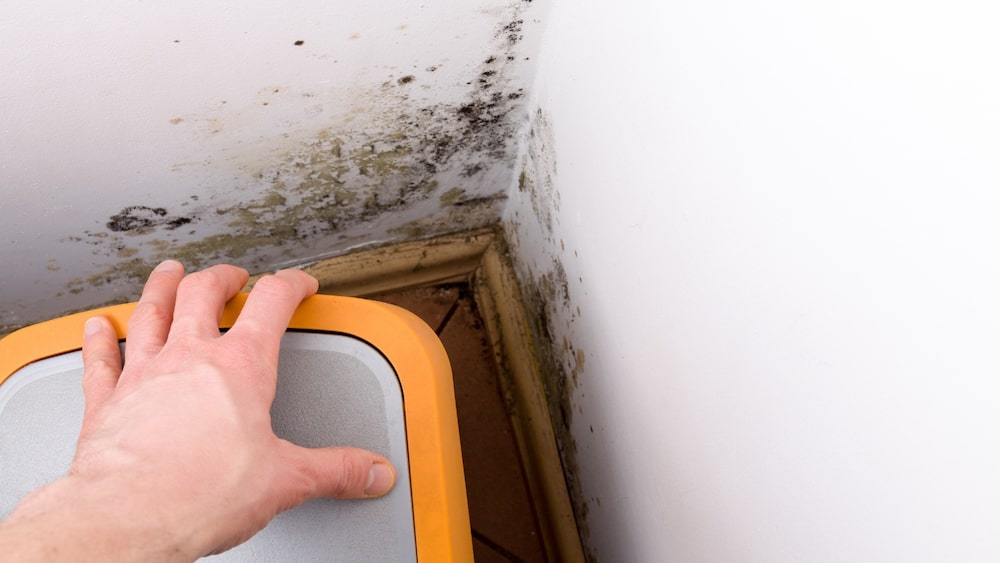
02 Sep 5 Places Where Mold Hides That Will Surprise You
As a homeowner, you may already be vigilant when it comes to checking for mold in your house. When you look for mold, you probably search places like the basement, the attic, or under the sink. However, mold is a tricky fungus that can crop up virtually anywhere. Don’t let mold surprise you—here are five places where mold can hide in your home.
Five Unexpected Places Where Mold Can Grow in Your Home
1. Your Toothbrush Holder
Mold’s best friend is moisture, and a toothbrush holder with excess water is the perfect place for mold to thrive. Prevent mold on your toothbrush holder by regularly washing it and drying it thoroughly. It’s also a good idea to wash and dry anything else that sits on the bathroom vanity, like soap dispensers, mouthwash, and other toiletries.
2. Filing Cabinets
Damp paper is the perfect food for mold spores. If you have a filing cabinet, bookshelf, or file boxes that may have gotten wet from flooding or water damage, check for mold right away. Mold and mildew can start to grow in as little as 24 to 48 hours after water exposure, so don’t wait!
If you’ve recently experienced flooding in your home, the best way to protect yourself and your belongings from mold exposure is to call in an expert. Pure Maintenance of New England offers free, in-home inspections—we can determine if there is mold in your house and where it is hiding.
3. Potted Plants
Overwatering your plants could kill them, but it can also cause mold to grow on their leaves, stems, and soil. You can identify plant mold by its white, powdery appearance, and preventing mold in your houseplants is an important part of keeping your home mold-free. To keep mold off their leaves, make sure your plants have adequate sunlight, and proper drainage, and aren’t overwatered.
Taking proper care of your houseplants keeps them healthy and you as well. Mold exposure can cause a variety of adverse health effects, especially in allergic or immunocompromised individuals.
4. Stacked Dishes
As tempting as it can be to skip drying your dishes, a stack of wet plates in a warm, dark cupboard is the perfect place for mold to move in. Kick mold out of your kitchen by wiping dishes dry after they come out of the sink or dishwasher, and by making sure that nothing in your cabinets is causing dampness or moisture.
5. The Microwave and Stove
What looks like garbage to us is a five-star meal for mold. The grease, crumbs, and food spills commonly found on stovetops and in microwave ovens can definitely encourage mold growth, especially if you don’t use them very often. Be sure to wipe down messy surfaces to prevent unwanted fungus from crashing your dinner plans.
More Tips for Preventing Mold
Mold is a hearty organism and there is no real way to get rid of its spores entirely. The best way to prevent mold growth is to eliminate the indoor environments where it can thrive.
This means repairing leaks and water damage, preventing condensation, and keeping the humidity levels in your home between 30% and 60%.
You can control humidity by:
- Properly ventilating bathrooms
- Using air-conditioners and dehumidifiers
- Turning on exhaust fans when cooking and cleaning
Carpeting is another food source for mold, so don’t install carpets in areas that gather moisture, like kitchens or bathrooms.
Mold Remediation in New England
Expert mold remediation services from Pure Maintenance of New England can help you keep mold at bay. Our demolition-free dry fog technology gets rid of mold from even the hardest places to reach, like attics and crawl spaces.
Call us today at 401-205-3825 or contact us online to schedule a free home inspection and get our expert advice for keeping your house mold-free!




No Comments